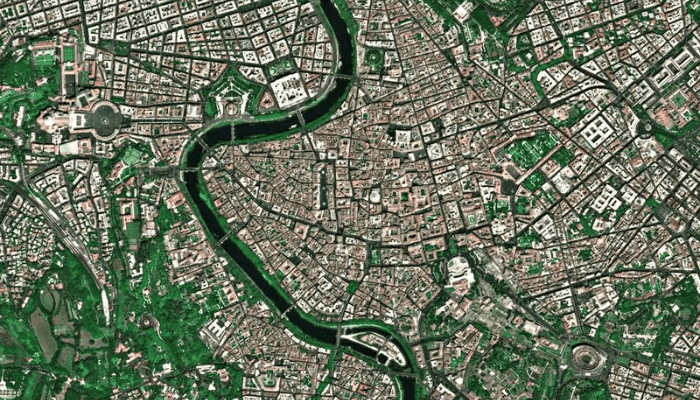Discover the incredible benefits of seeing cities via satellite!
Satellite imagery has revolutionized the way we explore and visualize our planet. Technology has become increasingly sophisticated and online mapping tools allow anyone with internet access to navigate the world in a detailed and interactive way. This is particularly useful for those who want to explore the world’s cities without leaving their home.
One of the main advantages of viewing cities via satellite is the ability to plan a trip in advance. By exploring a city’s satellite imagery, travelers can get a clear idea of what to expect before arriving there. They can pinpoint the location of hotels, restaurants and landmarks and assess their proximity to each other.
Another important advantage of seeing cities via satellite is the possibility to explore areas that may be dangerous or difficult to access. Satellite technology allows users to view remote and inaccessible locations without risking putting themselves in harm’s way.
What is the importance of using satellite images?
The use of satellite imagery is of great importance for data analysis and monitoring of areas around the world. Satellite imagery is a valuable source of information that can be used for a wide variety of purposes, from studying the climate to monitoring natural disasters.
Furthermore, satellite imagery can be used for urban and territorial planning, allowing governments and organizations to make informed decisions about land use and urban development.
What is the main advantage of satellite internet?
The main advantage of satellite internet is its ability to provide connectivity in remote areas where other forms of internet connection may not be available. This is particularly useful in rural areas where internet access may be limited due to a lack of telecommunications infrastructure.

Some other advantages of satellite internet include:
- Global Coverage: Unlike other forms of internet connection, which may be limited to certain geographic areas, satellite internet can provide worldwide connectivity.
- Connection speed: Satellite internet offers connection speeds comparable to terrestrial broadband connections, meaning users can surf the web, send emails and stream videos without any problems.
- Flexibility: Satellite internet is highly flexible, allowing users to choose from a variety of data plans and connection speeds to suit their specific needs.
- Reliability: Satellite internet is highly reliable and resistant to interference, which means that users can count on constant connectivity, regardless of weather conditions or other disruptions.
- Security: Satellite internet is highly secure, with advanced encryption systems to protect user data during transmission.
With its global coverage, connection speed comparable to terrestrial broadband and high flexibility, satellite internet is an innovative technology that continues to gain popularity around the world.
What are the advantages of using satellite?
The advantages of using satellites for Earth observation are numerous. These devices provide valuable data for a wide variety of industries such as agriculture, defense, environment, and more.
Certainly, the applications of using satellites are varied and go beyond what was mentioned in the first paragraph. Below are some of the main applications of satellite technology:
- Communications: Satellites are used to provide long-distance communication services, allowing people to communicate more efficiently anywhere in the world. This is particularly useful in remote areas or in regions with limited communication infrastructure.
- Navigation: Satellites are used to provide accurate navigation information around the world. The most well-known satellite navigation system is the Global Positioning System (GPS), which is widely used in navigation devices such as smartphones and vehicle navigation systems.
- Remote sensing: Satellites are used to collect information about the Earth, such as temperature, humidity, vegetation and other environmental parameters. This data is used to monitor the planet’s health and detect important environmental changes.
Which satellite will replace StarOne C2?
Anatel (National Telecommunications Agency) recently approved the launch of the Geostationary Defense and Strategic Communications Satellite (SGDC), which will replace StarOne C2. The SGDC is a joint project of the Ministry of Defense and the Ministry of Communications, with the objective of providing secure and strategic communications services for the Brazilian government, in addition to offering high-speed broadband throughout the national territory.
With the capacity to cover the entire Brazilian territory and the Atlantic Ocean, the SGDC will have a series of advanced resources, including secure communications capacity for the armed forces, in addition to telemedicine and distance education services.

Deixe um comentário